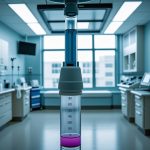The experience is almost universal: you’re comfortably enjoying a beverage – water, tea, coffee, juice – when suddenly, an overwhelming urge to urinate hits with surprising force. It’s not just inconvenience; it can disrupt focus, derail productivity, and even cause anxiety. Often, this isn’t about how much liquid you’ve consumed overall, but how you’ve consumed it. Rapid, large volumes of fluid intake overwhelm the body’s natural regulatory mechanisms, leading to what we’ll call “mid-urge overload.” This article explores the concept of low-volume sipping as a proactive strategy to minimize this frustrating and disruptive experience, focusing on understanding why it works and how to implement it effectively in daily life.
Many people unknowingly contribute to their own mid-urge overload through habit. We’re encouraged to stay hydrated – rightly so! – but often interpret that as gulping down large glasses of water throughout the day, or chugging coffee to power through tasks. While adequate hydration is vital, the method matters significantly. Our kidneys can typically process a steady flow of fluids efficiently, maintaining appropriate electrolyte balance and preventing sudden bladder pressure. However, when faced with a deluge, they struggle to keep up, resulting in that uncomfortable and sometimes urgent need to find a restroom immediately. Low-volume sipping isn’t about drinking less; it’s about drinking smarter. To support overall bladder health beyond hydration habits, consider incorporating regular exercise – *Kegel exercises* are particularly effective.
Understanding the Physiology of Urge & Volume
The sensation of needing to urinate is complex, involving signals from stretch receptors in the bladder to the brain. As the bladder fills with urine – a byproduct of fluid intake and metabolic processes – these receptors trigger a signal indicating fullness. However, this isn’t a simple on/off switch. The body has sophisticated mechanisms for regulating bladder capacity and controlling urination. These include hormones like antidiuretic hormone (ADH), which reduces urine production, and conscious control over the pelvic floor muscles. Rapid fluid intake overwhelms these systems, causing the stretch receptors to fire rapidly and intensely, leading to a sudden and strong urge. Low-volume sipping gives the body time to process fluids gradually, allowing these regulatory mechanisms to function optimally.
The speed at which you drink also impacts how quickly fluids are absorbed into the bloodstream. Gulping down large amounts bypasses some of the natural absorption processes in the mouth and esophagus, leading to a more rapid increase in blood volume and subsequent urine production. Smaller, frequent sips allow for better absorption in the upper digestive tract, reducing the sudden pressure on the kidneys and bladder. It’s also important to recognize that different beverages affect hydration differently; caffeinated drinks, for example, can have a mild diuretic effect, potentially exacerbating urge frequency if consumed rapidly. If you find certain foods trigger symptoms, explore *meal tips to avoid food triggers while socializing*.
Finally, consider individual variations. Factors like kidney function, overall health, medication use, and even activity levels play a role in how quickly the body processes fluids. What works well for one person may not work for another, necessitating a personalized approach to hydration strategies. The goal isn’t necessarily to eliminate urges entirely, but to manage them effectively and prevent overwhelming suddenness.
Implementing Low-Volume Sipping: A Practical Guide
Adopting low-volume sipping is less about strict rules and more about developing mindful drinking habits. It requires a slight shift in perspective, moving away from the idea of “getting your fluids in” quickly and towards a more sustained, gentle approach to hydration. Here’s how to implement it effectively:
- Choose Smaller Vessels: Replace large glasses or bottles with smaller alternatives – a glass of 8-12 ounces is often ideal. This naturally encourages smaller, more frequent sips.
- Sip Throughout the Day: Instead of drinking large amounts during meals or specific times, aim for consistent sipping throughout your waking hours. Keep water readily available and take regular small drinks.
- Pay Attention to Your Body: Listen to your body’s signals. Don’t wait until you feel thirsty – that’s a sign you’re already slightly dehydrated. Sip proactively, but also be mindful of how different beverages affect your individual urge frequency.
This isn’t about deprivation; it’s about optimization. It means enjoying your beverages without the anxiety of sudden urgency disrupting your day. Remember to space out fluid intake even during physical activity – a small sip every 15-20 minutes is far more effective than chugging water after exertion. Maintaining a healthy weight can also reduce pressure on the bladder, and proper nutrition may help avoid *natural fiber planning to avoid bladder wall friction*.
The Role of Beverage Choice & Timing
While low-volume sipping focuses on how you drink, the what and when also matter. Certain beverages are inherently more likely to trigger frequent urination. Caffeinated drinks – coffee, tea, soda – have a mild diuretic effect, meaning they encourage fluid loss. Alcohol is another strong diuretic. Sugary drinks can also contribute to increased urine production as the kidneys work to process excess sugar. Choosing water as your primary beverage and limiting these other options can significantly reduce urge frequency.
Timing your fluid intake around activities is crucial. Avoid drinking large volumes immediately before meetings, presentations, or any situation where access to a restroom might be limited. Instead, sip steadily beforehand and during breaks. Consider the timing relative to bedtime – reducing fluid intake a few hours before sleep can minimize nighttime awakenings for bathroom trips. Strategic hydration isn’t about restricting fluids; it’s about aligning your intake with your daily schedule and activities. Proper *timing of meals* can also make a difference in managing urgency.
Beyond Sipping: Supporting Bladder Health
Low-volume sipping is an excellent starting point, but supporting overall bladder health involves more than just hydration habits. A few simple lifestyle adjustments can further enhance control and minimize urge frequency.
- Regular exercise strengthens pelvic floor muscles, which play a vital role in bladder control. Kegel exercises, where you contract and relax these muscles, are particularly effective.
- Maintaining a healthy weight reduces pressure on the bladder. Obesity can contribute to increased urgency and incontinence.
- Avoid constipation, as it can put extra strain on the bladder. A diet rich in fiber and adequate hydration helps maintain regular bowel movements.
- Limit bladder irritants like spicy foods, artificial sweeteners, and acidic fruits if you find they exacerbate your symptoms.
It’s important to remember that frequent urination or urgency can sometimes indicate an underlying medical condition. If you experience sudden changes in urinary habits, persistent discomfort, or any concerning symptoms, consult a healthcare professional for proper evaluation and diagnosis. This article provides general information only and should not be considered medical advice. Remember that *proactive habits* are key to avoiding bathroom emergencies.





















